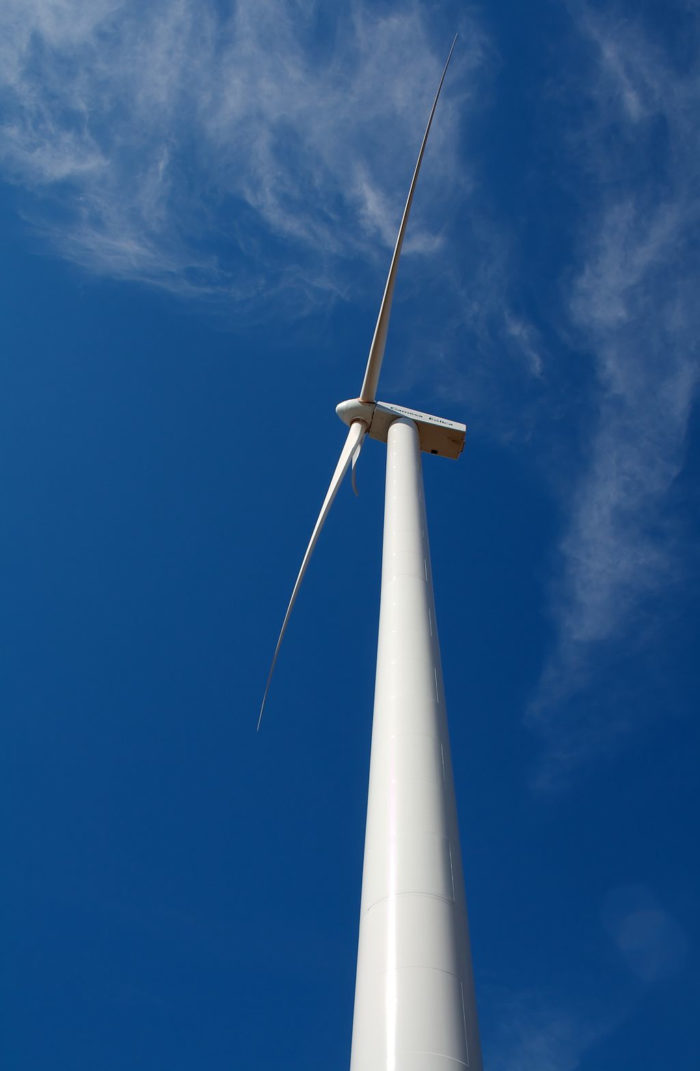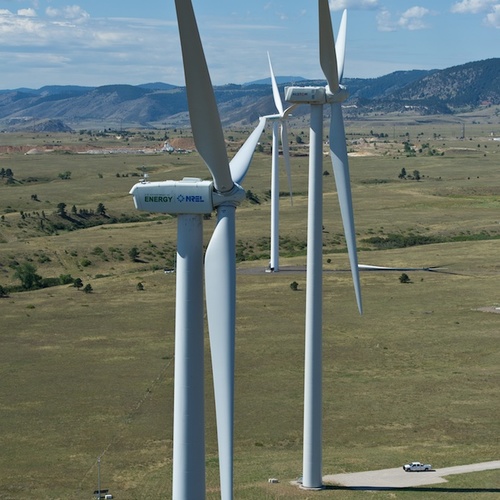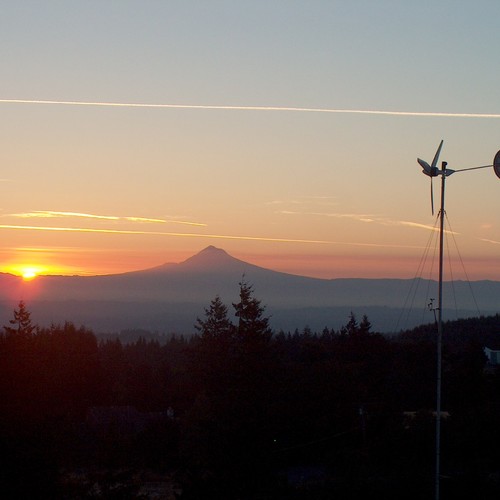
Researchers studying the environmental life cycle of 2-megawatt wind turbines found they recoup the energy required to manufacture and install them, and begin making a net energy contribution, in a matter of months.
Writing in The International Journal of Sustainable Manufacturing, two authors from Oregon State University said there are virtually no carbon emissions associated with the energy that turbines produce. But there are environmental costs associated with manufacturing and installing the devices, as well as dealing with them at the end of their expected 20-year life span.
Researchers based their findings on a study of two turbines in the Pacific Northwest and calculated energy payback at 5.2 months and 6.4 months.
The full article appeared to be behind a pay wall, but summaries have been published at several websites, including Phys.org and Sciencespot.
A life cycle assessment covers energy associated with procuring raw materials (such as steel, copper, fiberglass, and concrete), transportation, manufacturing, installation, two decades worth of maintenance and recycling and disposal when the turbines are worn out.
“It is likely that even in a worst-case scenario, lifetime energy requirements for each turbine will be subsumed by the first year of active use,” Sciencespot said. “Thus, for the 19 subsequent years, each turbine will, in effect, power over 500 households without consuming electricity generated using conventional energy sources.”
According to the website Windustry.org, the 2 MW capacity of the two turbines cited in the report is typical of today’s commercial-scale turbines. Such a turbine costs between $3 million and $4 million installed.
Weekly Newsletter
Get building science and energy efficiency advice, plus special offers, in your inbox.















3 Comments
Skeptical
Get out your grain of salt for this one. Without seeing the manuscript, it is hard to assert criticism BUT... Does the analysis include the enormous subsidies for both install and power generation. Does the analysis include the cost of the transmission lines and associated equipment. Does the analysis include the environmental destruction associated with industrial scale machinery in rural areas (e.g., blow the top of a mountain off into the valley). Does the analysis include that the up time is usually less than 30% and requires constant base load (which we know is free). And does the analysis include the impact of these machines on those who live within 2 or so miles. OK. I thought not.
Response to Paul Termin
Paul,
You may need to crank down your rhetoric a notch. Wind turbines were installed on a ridge near my house, and the development did not require "blowing the top of a mountain top into the valley." The mountain top is still there. In fact, the mountain top is desirable; the higher the altitude, the better the wind.
Yep, it includes all of that- read the long analysis version
Capacity factors for utility scale onshore wind installations in the US run between 25-35%, with few exceptions (they don't build them in locations where you can't get at least a 20% capacity factor, which is an up time of only 1/5 at full full power). Offshore wind New England is expected to reap 35%+ or capacity factors based on wind surveys, the energy costs of construction & transmission lines will be somewhat higher than many/most on-shore installations.
This is just one of many many studies that place the all-in lifecycle EROEI (energy return on energy invested) at between 18:1 and 22:1. That's the range typically estimated for nuclear power plants as well, and quite a bit higher than the estimates for retrieving shale-oil or shale-gas.
The all-in EROEI of utility scale photovoltaics is less than half that, and in worst-case situations less than 1/4 that (say, a large remote hillside where new roads & transmission lines had to be cut.) Some have have been built in recent years with EROEI less than 5. But since rooftop PV doesn't have those additional development energy inputs (the local grids & road pre-existed the rooftop) rooftop silicon PV has typical EROEI in the 10-12 range. Those figures are incrementally growing on year on year, at about the same pace than the year-on-year improvements of wind power, but starting at a lower point. Thin-film PV technologies have an EROEI edge on commodity lo-tech mid-efficiency silicon PV, but often a higher lifecycle $/Mwh cost.
With PV there is no real advantage to take it to utility scale anyway, but with wind there is. With wind it's about size and geographic location- you have to build where the resource is optimal, and there are economies of scale by going to bigger turbines & higher towers. But the sun shines at reasonable intensity almost everywhere, and there are few disadvantages to building it at small scale, near the ground, and sized to the local loads.
At current fuel costs & turbine costs you can't even fuel a nuke for the lifecycle per kwh cost of 30% capacity factor wind- it's as cheap or cheaper than $5MMBTU/gas burned in a 55% efficiency combined cycle gas burner, and cheaper than 30% efficiency thermal coal. This stuff is getting cheaper & better every year, and is totally ready for prime time RIGHT NOW. (In Texas the expanding wind development is even cutting into the capacity factors of existing baseload power plants, despite being one of the few parts of the US that has expanding rather than shrinking baseload demand.)
Log in or create an account to post a comment.
Sign up Log in